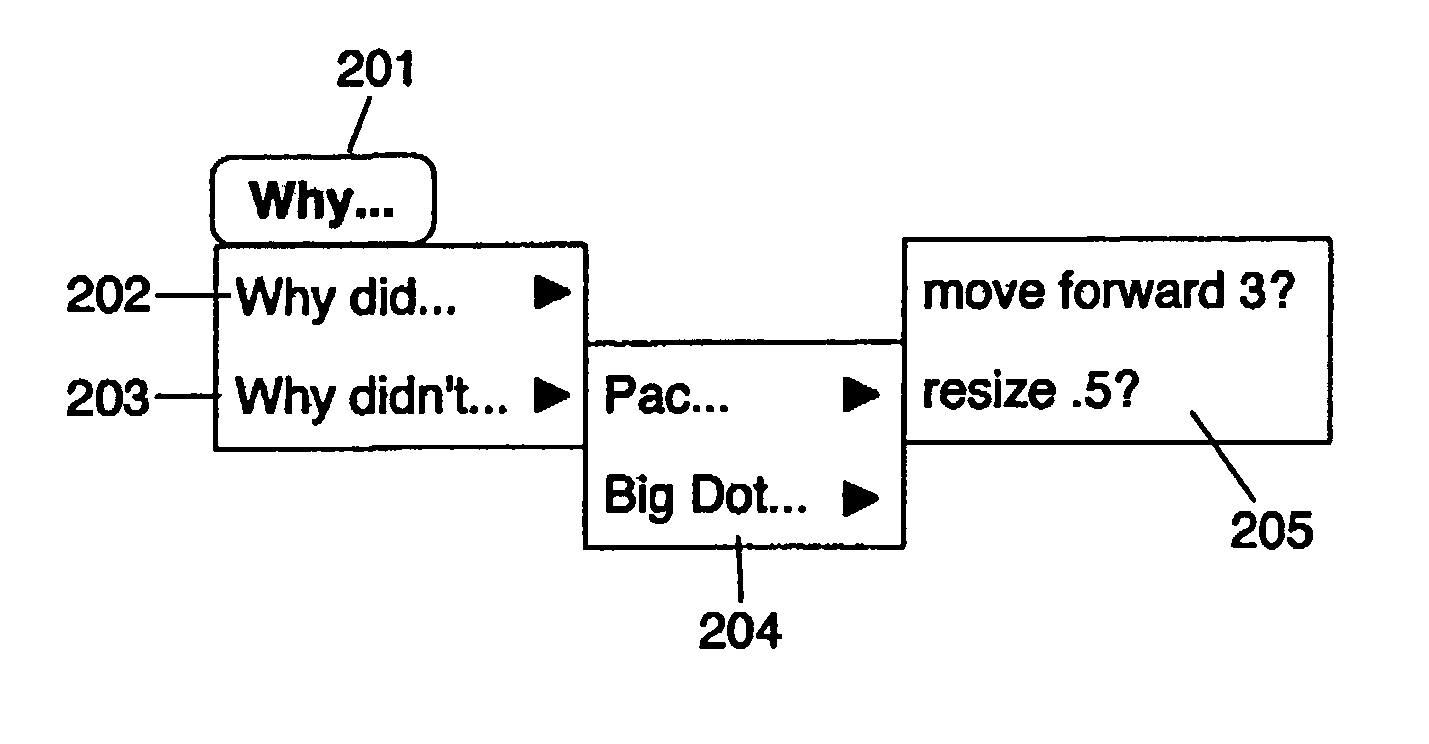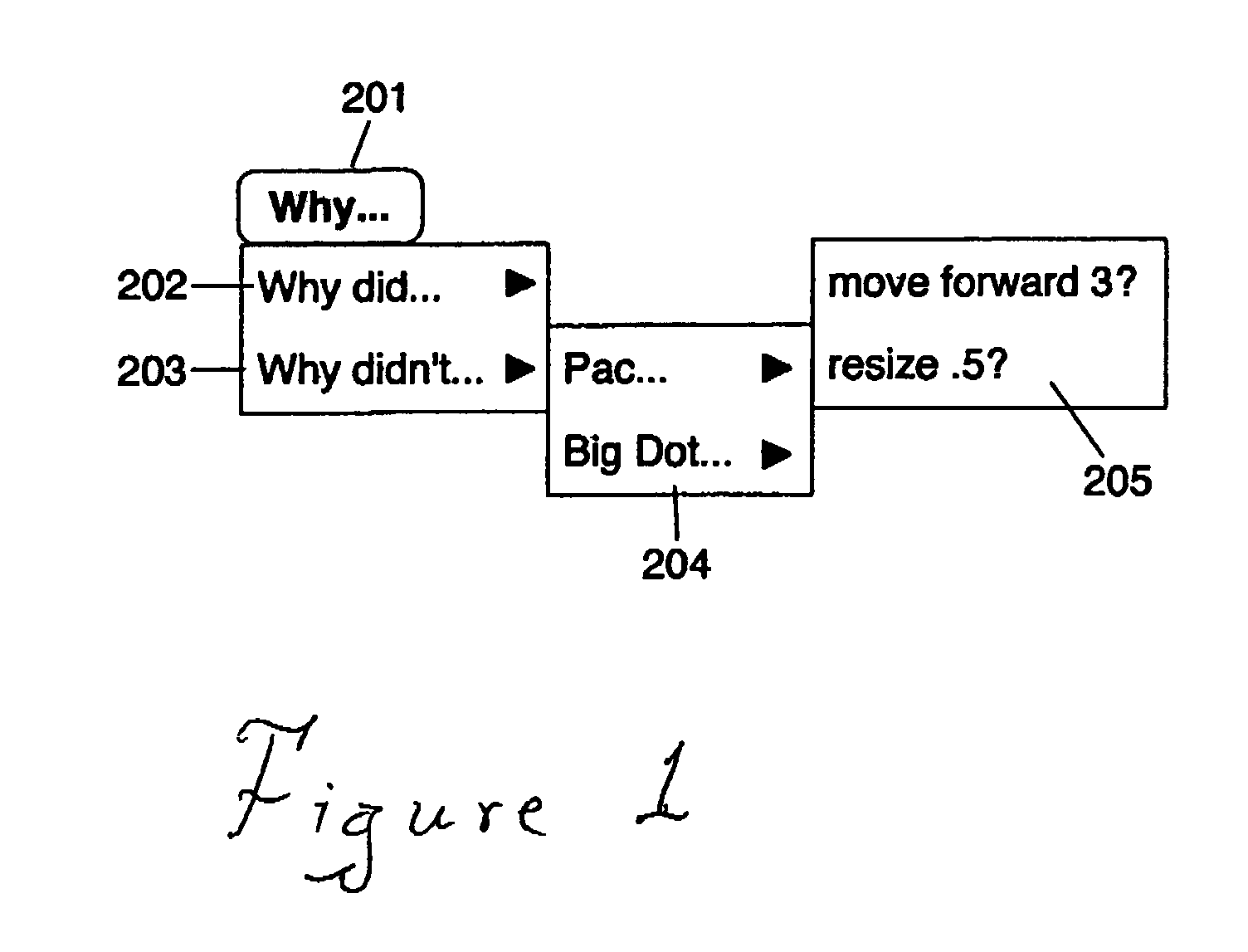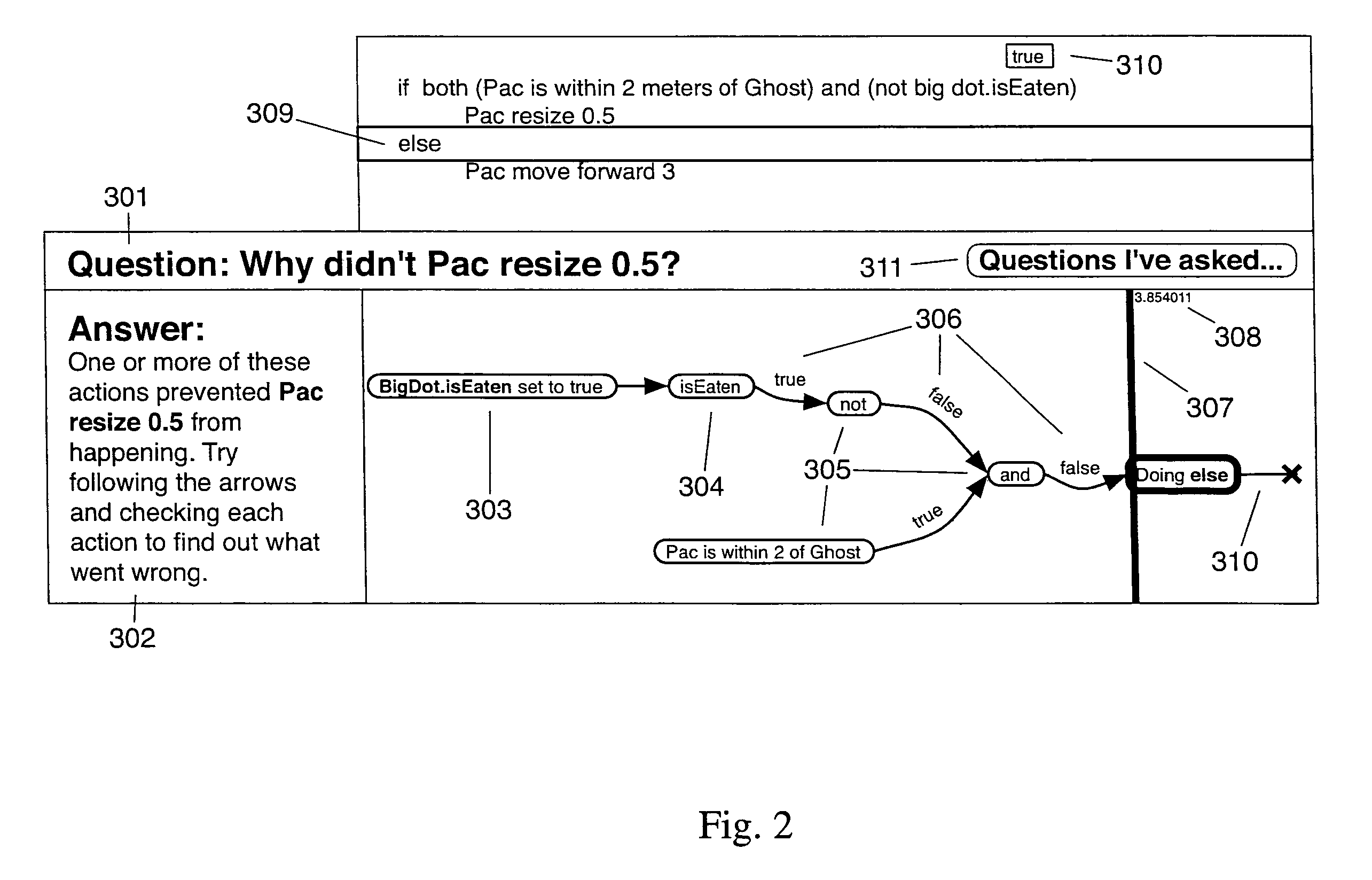Debugging interface
a debugging interface and interface technology, applied in the field of debugging interfaces, can solve the problems of affecting exploration and restructuring, affecting and the most common and most costly debugging still remains the most common and most costly problem, so as to reduce debugging time and increase the productivity of programmers
- Summary
- Abstract
- Description
- Claims
- Application Information
AI Technical Summary
Benefits of technology
Problems solved by technology
Method used
Image
Examples
Embodiment Construction
[0034]The present invention will be described in terms of a software tool called the “Whyline” that can be used, for example, to debug computer programs. Before describing the Whyline's implementation, one embodiment of its design is illustrated through the following debugging scenario:[0035]The user is creating a Pac-Man game world, and trying to make Pac shrink when the ghost is chasing and touches Pac. She plays the world and makes Pac collide with the ghost, but to her surprise, Pac does not shrink . . . .
[0036]Pac did not shrink because the user has code that prevents Pac from resizing after the big dot is eaten. Either the user did not notice that Pac ate the big dot, or she forgot about the dependency.
The Question Menu
[0037]When the user played the world, she would see the subject program's output and animations. In this example, the user can select a button (referred to as the “why” button) to utilize the present invention. As shown in FIG. 1, the user presses the “why” butt...
PUM
 Login to View More
Login to View More Abstract
Description
Claims
Application Information
 Login to View More
Login to View More - R&D
- Intellectual Property
- Life Sciences
- Materials
- Tech Scout
- Unparalleled Data Quality
- Higher Quality Content
- 60% Fewer Hallucinations
Browse by: Latest US Patents, China's latest patents, Technical Efficacy Thesaurus, Application Domain, Technology Topic, Popular Technical Reports.
© 2025 PatSnap. All rights reserved.Legal|Privacy policy|Modern Slavery Act Transparency Statement|Sitemap|About US| Contact US: help@patsnap.com



